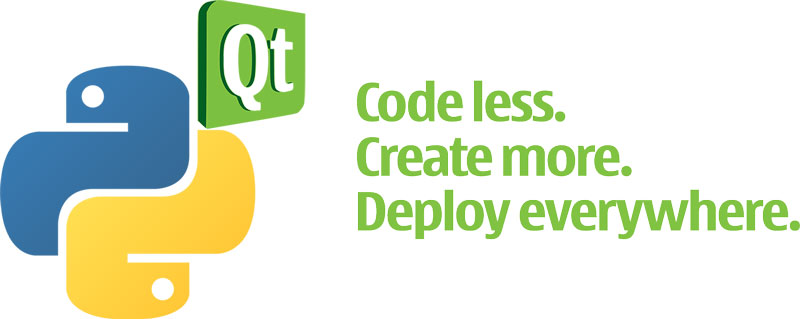
Now, let’s import that file to show our window. Yes! That creates a new file with the name mydesign.py. ui file to a Python code: $ pyuic5 mydesign.ui -o mydesign.py Now, let’s try the second way by converting the. If you used app.exec() directly, the application would send zero, which means success, and this will happen even if the application crashed.
#Install pyqt5 linux code#
We used sys.exit(app.exec()) instead of using app.exec() directly to send the correct status code to the parent process or the calling process. That means the ui file loaded successfully! If you run your code, you should see a window with nothing but a label. Win = uic.loadUi("mydesign.ui") #specify the location of your. ui file in your Python code, you can use the loadUI() function from uic like this: from PyQt5 import QtWidgets, uic Now, to use this design, you have two ways: Then from the file menu, click save PyQt5 designer will export your form into an XML file with. Open PyQt5 designer, and choose Main Window template and click create button. In this tutorial, we will use the PyQt5 designer, but before we dig deeper, let’s see how we will use the generated design from the PyQt5 designer. So we have three types of templates, what is the difference? Widget: Creates a widget that is inherited from QWidget class, unlike the Dialogs templates which inherit from QDialog class.Main Window: Creates a window with a menu bar and a toolbar and inherited from QMainWindow.Dialog without Buttons: Creates a blank form.Dialog with Buttons Right: Creates a form with OK and Cancel buttons at the top right of the form.Dialog with Buttons Bottom: Creates a form with OK and Cancel buttons at the bottom right of the form.Open designer.exe, and you will see a dialog asking you about the form template you want. You can make a shortcut for it instead of going into this location every time you want to run the PyQt5 designer.
#Install pyqt5 linux install#
$ pip3 install PyQt5-tools Where is PyQt5 designer?Īfter successful installation, you can find the PyQt5 designer on this location: C:\Program Files\Python36\Lib\site-packages\pyqt5-tools\Īlso, If you installed Python for your current user only, you will find the PyQt5 designer on this location: C:\Users\LikeGeeks\AppData\Local\Programs\Python\Python36-32\Lib\site-packages\ pyqt5-tools\ To install it, you need to install PyQt5 tools.

In this PyQt5 tutorial, we will use the PyQt5 designer, which makes it so easy to finish a lot of work in a matter of seconds. There are two ways to build GUI apps using PyQt5:
#Install pyqt5 linux download#
Now you are ready to download and install PyQt5 source. To install SIP, run the following command: $ pip3 install PyQt5-sip So to install PyQt5 from source, you need at first to install SIP. The tool that makes this binding is called SIP. To install PyQt5 from source, you have to do the following:Īs you might know, PyQt5 is a Python binding for the famous library Qt that is written in C++. If no errors appeared, that means you have successfully installed PyQt5, but if you got errors, you might be using an unsupported version of Python.


To ensure the successful installation, run the following Python code: import PyQt5 To install PyQt5 using pip, run the following command: $ pip3 install PyQt5 PyQt5 has two versions, the commercial version and the free GPL version that we will use in this tutorial.


 0 kommentar(er)
0 kommentar(er)
